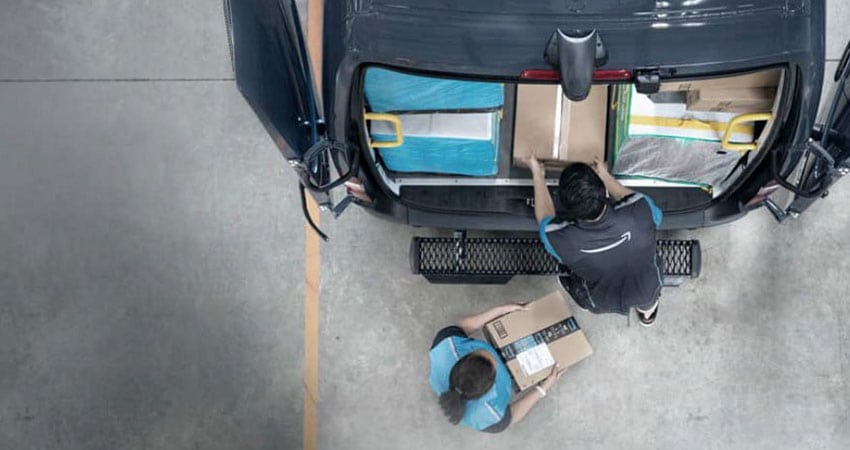Once again Amazon is working to expand its own delivery capabilities, inviting entrepreneurs to launch new companies with fleets of 20-40 vans emblazoned with its ubiquitous logo, even offering discounted lease rates it has negotiated, the company announced.
This again raises the question of Amazon’s business with major carriers UPS, FedEx and the U.S. Postal Service, and its growing parcel volume that is outstripping their capacities. The USPS in particular handles about half of Amazon’s volume, including Sunday deliveries.
The company said it will help entrepreneurs start, set up and manage their delivery business, promising as much as $300,000 in annual profit for as little as a $10,000 investment. Owners will have guaranteed volume from Amazon, access to the company’s delivery technology, training, and discounts on vehicle leases and insurance. Amazon envisions an eventual army of hundreds of small business owners with thousands of drivers and vehicles nationwide through the program.
Amazon will also provide access to “a variety of exclusively negotiated discounts on important resources” for operating a delivery business, without naming them. The deal also involves using Amazon-branded vehicles customized for delivery and branded uniforms.
In a nod to the military, Amazon is pledging $1 million toward funding startup costs for veterans, offering $10,000 reimbursements for qualified candidates.
“We have great partners in our traditional carriers and it’s exciting to continue to see the logistics industry grow,” said Dave Clark, Amazon’s senior vice president of worldwide operations, in a release. “Customer demand is higher than ever and we have a need to build more capacity.”
MCM Musings: With an estimated 1.2 billion packages shipped per year according to MWPVL International, and $21.72 billion spent globally on shipping in 2017 – representing about 12% of revenue – Amazon clearly has capacity and volume issues to address. It and the carriers continue to insist their relationships are as strong as ever, but the rising costs are clearly a major concern. Along with major investments in leased cargo jets, parcel sortation centers, tractor trailers and a planned air hub outside Cincinnati, this latest move will help Amazon address its capacity overflow especially during peak periods.

